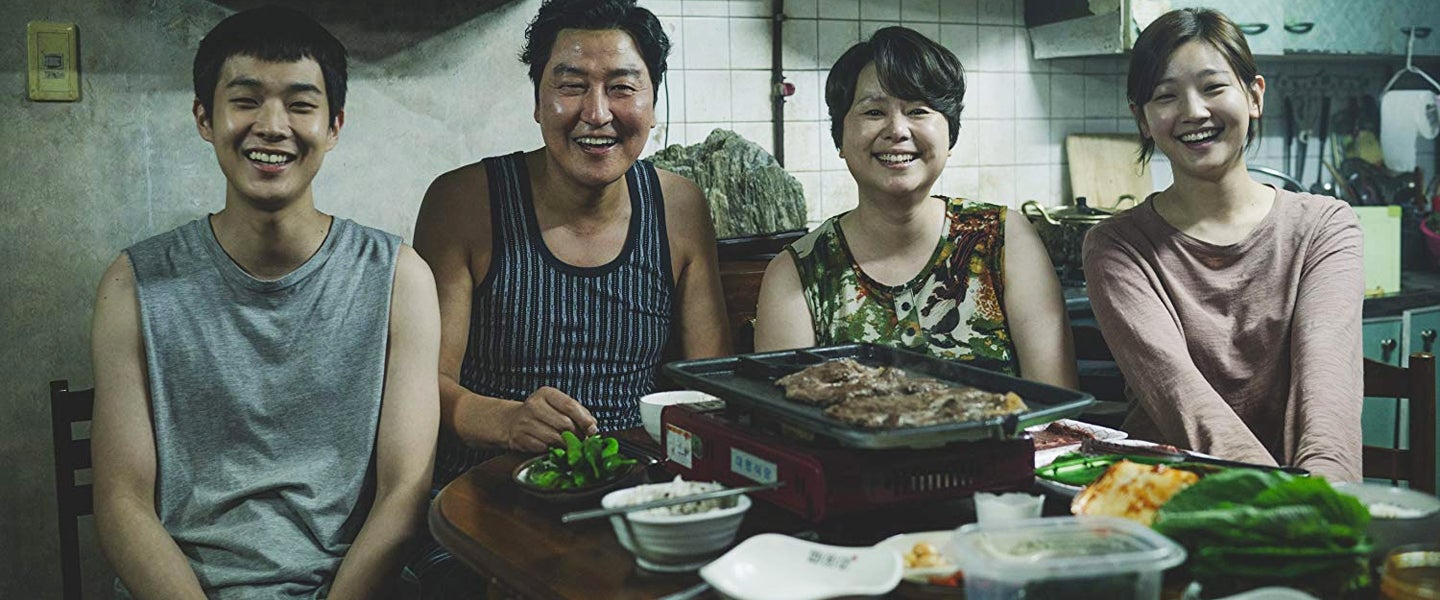No one could make a packet of dehydrated noodles look quite as irresistible as Bong Joon-ho. In his new thriller Parasite, the South Korean director beautifully captures the making of “ram-don”: golden, salty, boiled noodles topped with blood-red, cubed and seared sirloin. In a film full of eerie surprises, this tense scene left an impression. Audiences left theaters hungry for the dish.
2. for some reason i thought parasite was marketed as a horror. thank goodness it's not. though there are "horrific" parts to the story.
3. WE ALL WANTED TO EAT NOODLES AFTER THIS LOVIE THANKS BONG JOON-HO!… pic.twitter.com/zjXfOxDR9M— Jenny Yang (@jennyyangtv) November 10, 2019
Among the many tidbits Bong Joon-ho told us about PARASITE, he said “ram-don” is a dish he invented for the film: Korean jjapaguri noodles “classed up” with sirloin on top, because a “rich mother could never serve it plain.” Many of his details have an economic subtext.
— Joshua Rothkopf (@joshrothkopf) October 12, 2019
Which brings me to my favorite throwaway moment in PARASITE: Yeon-kyo offering the noodles to her husband and son and then eating them herself, without offering them to her (rightly pissed) daughter, Da-hye. The subtle ways patriarchy manifests itself in a household …
— Justin Chang (@JustinCChang) October 31, 2019
But don’t go asking for ram-don at your local noodle shop or Korean restaurant. According to the Los Angeles Times, translator Darcy Paquet, who worked on Parasite’s subtitles, couldn’t find the perfect English word for the Korean dish jjapaguri. So she made a portmanteau of the words “ramen” and “udon.”
Jjapaguri is a real type of Korean ramen. Bong added sirloin in his cinematic cooking to demonstrate the classist disregard the housewife has for commoners, including her own housekeeper. “This is something kids like, regardless of the rich or the poor,” Bong explained in an email to the Los Angeles Times. “But the rich wife couldn’t stand her kid to eat this cheap noodle, so she adds sirloin topping.”
This hasn’t stopped hungry moviegoers from attempting to recreate the dish at home. While the dish sounds pretty simple — packet noodles topped with steak — cooks are finding out that it takes more than the film’s eight minutes to create the dish.
Made “ram-don” aka jjapaguri with steak Parasite style, took me longer than 8 minutes though ? pic.twitter.com/HXrO9ov9Kq
— Courtney ? TaeTae Week! ? (@Winter_Seoks) November 16, 2019
Guianne Ramos, a 25-year-old in San Diego, completed her bowl in 15 minutes with the help of YouTube tutorials. Videos titled “steak ramen” and “sirloin jjapaguri” are useful stand-ins for fruitless Google searches for ram-don recipes.
In the film, the housekeeper combines two different types of instant noodle brands: Chapagetti ramen and Neoguri’s seafood-flavored udon. Ramos doesn’t like Chapagetti, so she used Paldo Jjajangmen chajang noodles.
if u watched parasite u would kno (also i hate chapagetti so im not using that brand) pic.twitter.com/c6YzGcncYv
— gui loves taejinyuzupsj ?❄️ (@korejinnie) September 16, 2019
Two packets of noodles plus steak is a lot of food, but Bong created a dish worth the gluttony. “It just felt right and perfect, and one person can actually finish it even with steak too,” Ramos says.
But if you’re low-carb and still want to get your ram-don on, here’s one piece of advice: Don’t double up on sauces. Linh Thai, a 29-year-old from New Jersey, tells MEL, “I made the mistake of using less noodle but also using the full amount of seasoning instead of halving it. So it turned out way saltier than I would’ve liked.”
So if you’re at home and creating the dish, be mindful of how you create it — even if it’s out of admiration for Parasite, one of the best films of the year. Writer Kirsten Yoonsoo Kim wrote about the Korean affinity for Frankensteinian slang terms such as “ram-don” for Filmmaker. Having grown up eating jjapaguri, she’s surprised to see the dish become the hot meal of Hollywood — under a new name. “That I am seeing attempts at this dish on my Instagram feed (especially from non-Korean friends) is both jarring and delightful,” she says. “And really speaks to the international appeal of Parasite.”

